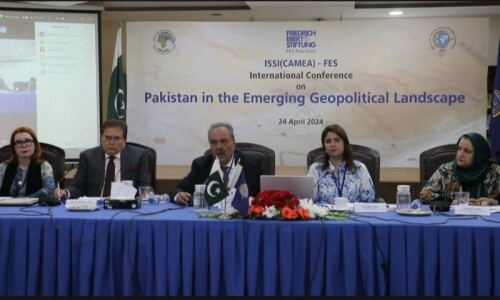ISLAMABAD: South Asia is no longer the fastest-growing region in the world, the World Bank said in a recent report.
Despite benign global conditions, South Asia has forfeited the economic growth trend, with East Asia and Pacific back to the top position, it said.
However, growth in South Asia is expected to remain robust, the report said, adding that it is likely to become the fastest-growing region once again in the next two years. Growth in South Asia is expected to be 6.9 per cent in 2018. It is anticipated to stabilise around 7pc over the medium term, according to the twice-a-year South Asia Economic Focus (SAEF) report.
South Asia remained the fastest-growing region in the world since the second quarter of 2014. In the first quarter of 2016, regional growth reached a record high of 9.1pc. But the growth rate gradually and steadily declined afterwards.
Despite concerns about its weakening macroeconomic discipline, growth in Pakistan is expected to increase to 5.3pc during the current fiscal year and 5.8pc in 2019, the report said.
Robust growth prospects rest on the expectation that domestic consumption will remain strong, private-sector investment will regain momentum and exports will recover. Starting this year, growth should increasingly be driven by investment and exports. Gross fixed capital formation is forecast to accelerate to 5.2pc next year and to 6.7pc in 2019.
Export growth is likely to increase to 5.8pc next year and 6.6pc the year after. At the same time, imports are expected to grow more slowly next year. Government consumption is forecast to moderate from 11.9pc this year to 9.4pc in 2019.
Nightlight intensity is more strongly correlated with economic activity in manufacturing and services than agriculture. The sector of activity that is typically in the dark is agriculture. In developing countries, including South Asia, access to electricity is especially low among farmers. And even when they have access, farmers tend to use the electricity for activities, like water pumping, which do not generate nightlight.
When considering a large cross section of countries covering the whole world, the relationship is statistically significant for all three sectors. But it is weaker for agriculture. When focusing on South Asia only, the relationship becomes statistically insignificant for the agricultural sector.
Consistent with sluggish growth in the region and still relatively low commodity prices globally, inflation has been subdued in South Asia. The declining trend is somewhat hidden by an annual cycle influenced by the monsoon and its impact on food prices.
Published in Dawn, October 10th, 2017













































